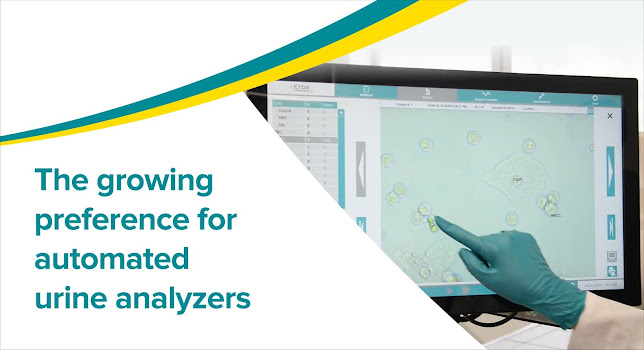The growing preference for automated urine analyzers
Urinalysis is one of the most frequently performed clinical investigations carried out in both inpatient and outpatient settings, due to its high information content and accessibility. Over the past two decades, technological advancement has led to the development of modern fully automated urine sediment analyzers, that make it possible to standardize results and increase laboratory productivity.
Time and again, routine urinalysis has proved its clinical utility for
screening, diagnosing and monitoring of renal, urological and metabolic conditions.
It also plays an important role in the evaluation of
liver function and several urological malignancies. Urinary tract infections
(UTIs) are extremely common worldwide. In addition to detecting leukocytes and
nitrites, urine microscopy identifies bacteria. These findings are crucial to
the treatment process. In the current pandemic, urinalysis is useful in unveiling
potential renal impairment due to COVID-19.
Technological advancements
Adoption of
automation in sediment analysis has paved the way for significant progress in
urinalysis. These systems reduce human intervention, making it possible to
standardize results, and streamline workflow and increase laboratory
productivity.
AI-based element identification systems- Integration of AI with
digital bright-field microscopy in automated sediment analyzers provides clear,
high-quality images mimicking visual
microscopy. These systems are
enabled to recognize thousands of known sediment elements. This considerably reduces repetitions, while
improving the accuracy and reliability of sediment particle detection and
differentiation. Additionally, when an atypical cell appears on the screen, the
pathologist can check the accuracy of the automatic identification and further evaluate to confirm the sub-types.
Expert systems reduce analytical errors in sediment and test strip analysis.
Integrated operating mode- Fully automated analyzers integrate analysis of chemical parameters on test strips and urine sediment examination in a format compatible with manual microscopy.
Gravity sedimentation- Compared to centrifugation, gravity sedimentation ensures less damage to fragile elements like casts and a lower risk of RBC lysis. This results in cost savings as it allows re-use of cuvettes.
Active humidity protection of diagnostic strips- Desiccators and silica gel bags, aid in maintaining humidity up to 40% lower than ambient humidity, eliminating false-positive results.
Among other benefits, these technological advancements lead to decreased usage of consumables, resulting in cost-effective operations. With greater emphasis on early detection of Chronic Kidney Disease and diabetic nephropathy fuelling high demand for urinalysis, fully automated systems are proving to be a boon for pathology laboratories with the high workload in government medical colleges, corporate hospitals and chain labs.
Authored by:
Grieston Fonseca
Asst. Manager - Urinalysis
Transasia Bio-Medicals Ltd.





Comments
Post a Comment